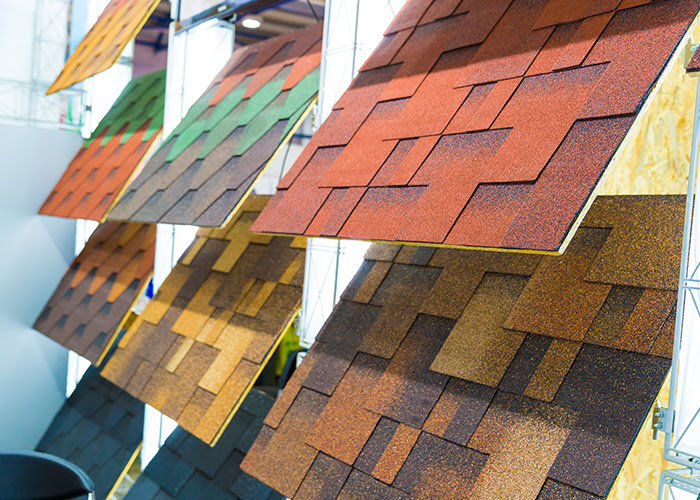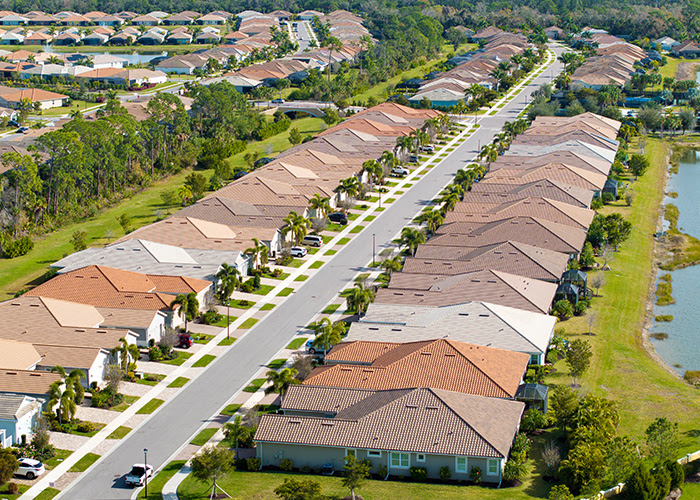Do Houston HOAs Require Pre-Approval for Roof Colors?
By Shantell Moya · 13 hours ago · 13 min read

Houston HOAs usually need approval if you want to change the color of your roof – it’s where a lot of homeowners get themselves into hot water. Lots of homeowners sign contracts with roofing contractors without even realizing that the HOA has any say in it. Once they find out, they’re already stuck with expensive problems that absolutely could have been avoided.
The architectural review committees in Houston usually only meet once a month, and this can seriously slow down your project. If your paperwork arrives even one day late for their deadline, then your roofing contractor may need to wait around for a few weeks until the committee meets again. Response times can change wildly across different neighborhoods, too. Some committees will get back to you within 30 days, and others can take more than 60 days to make a choice. Storm season makes everything worse because suddenly, everyone needs roof repairs at the same time.
The conflict between what makes sense and HOA guidelines hits you when you actually sit down to plan your roof replacement. White roofs are great for reflecting heat, and they help reduce your energy costs in Houston’s climate. Lots of HOAs won’t even think about allowing them, though. Metal roofing performs extremely well during hurricane season, and these roofs can last for decades with minimal maintenance. The issue is that most of the older neighborhood covenants were written long before these modern materials even existed, and they don’t mention them anywhere in the paperwork.
Here’s what you need to know about the HOA roof color requirements in Houston!
Your HOA’s Power Over Roof Colors
Most homeowners have no idea that their HOA can dictate what color their roof needs to be, at least not until they need to replace their roof and suddenly discover this little detail of a restriction. The HOA gets this power from Texas Property Code Chapter 209 and from the CC&Rs that were a part of your home at purchase. All these documents work together to create what’s essentially a binding contract between you and the HOA.
There was a pretty big court case back in 1985 called Inwood North Homeowners’ Association v. Harris that changed the game for HOAs in Texas. The court ruled that HOAs have the right to enforce their architectural standards as long as they follow their own established procedures. After this ruling came down, HOAs all across Texas felt more confident about their ability to regulate exterior changes to homes.
Property values drive most of these decisions. Everyone in the neighborhood wants their home values to stay high, and the HOA believes consistency helps with that. A bright purple roof would make your house look different from the rest. The problem is that it might also scare away buyers when your neighbor tries to sell their place later. Associations want the whole neighborhood to look unified and to appeal to potential buyers when homes go on the market.
Quite a few homeowners discover an uncomfortable truth about property ownership that feels backward. Even after you’ve bought and paid for your house, you still can’t make whatever changes you want to the exterior. These restrictions seem unfair to homeowners who first run into them. All these restrictions were actually part of the deal from when you bought the place, though. They were right there in that mountain of paperwork at closing that most buyers never read through.
The restrictions are enforceable contracts that run with the land, which is a technical way to say that they stay in effect forever, no matter who owns the property. Your HOA didn’t come up with these restrictions just to make everyone miserable. The whole point is to protect the investment that everyone in the neighborhood has made and to preserve the character and appeal that probably attracted you to the area when you first went house hunting.
Your HOA Approval Timeline
Most Houston HOAs need at least 30 to 60 days to approve your roof color choice. Homeowners will schedule their contractor for next week and then find out that they need to wait 2 months for HOA approval first.
The application process itself is actually pretty simple, but you do need to get a few documents ready ahead of time. You’ll need to collect the color samples from your roofing manufacturer and include the exact product specifications in your paperwork. Your HOA will also want to know which contractor you’re planning to use for the job. Some neighborhoods have moved to online submission portals, and others still want paper applications delivered to their management company.
The main bottleneck happens with the architectural committees. Most of these committees only meet once a month to review applications. Missing the deadline for April’s meeting means you won’t get on the agenda until May. Then you have to wait for the committee to review everything and send their answer back to you, which is why the whole process can take 60 days.
Hurricane season makes everything a lot more difficult. From June through November, roofing contractors are very busy with emergency repairs and insurance claims. Waiting until August to start your HOA application might mean you won’t get approval until October. At that point, you probably won’t find an available contractor before the holidays.
The best strategy is to start your HOA application before calling contractors for quotes. Once your color is approved, you can schedule the work without any delays or problems. Your neighbors who have had to postpone their roof replacement twice because of HOA delays will tell you the same thing.
Houston HOA Rules for Your Roof Colors
Houston HOAs have a pretty specific vision for what they want neighborhood roofs to look like – and it’s not very interesting. Earth colors are the only colors that are on the menu in most neighborhoods. These include brown, tan, gray and maybe a few similar shades if you’re lucky. The reason that these particular colors dominate every approved palette is because HOAs value that uniform, coordinated neighborhood appearance above almost everything else.
Some neighborhoods are pretty relaxed about these guidelines. Others are pretty serious about them. These neighborhoods have architectural committees that won’t budge an inch on roof colors. They have their approved palette and that’s it. Living in either neighborhood means that you’ll give up on installing something different or creative. They’re not going to approve it.
White roofs and lighter colors do a great job at bouncing heat away from your home during Houston’s brutal summer months. The savings on your electric bill add up over time. But HOAs across the city still ban these lighter roof colors anyway, because the way a neighborhood looks from the street matters more to them than whether their residents can afford their monthly utility bills. Homeowners who want to control their energy bills are stuck with darker options that absorb more heat.
Modern roofing materials add another whole layer of difficulty to an already complicated situation. Metal roofs are becoming more popular all over Houston, and it makes perfect sense why. A quality metal roof will last much longer than traditional shingles and can stand up against our wild weather patterns much better, too. The big issue is that most HOA documents were written 20 or 30 years ago, when metal roofs weren’t a common residential option. Since the guidelines don’t specifically mention these metal materials at all, homeowners and HOAs get stuck in long disputes about whether they’re actually allowed.
A few homeowners have already cracked the code on working with these restrictions. The smartest move anyone can make is to walk into HOA board meetings armed with numbers about energy savings and long-term costs. Empty claims about lighter roofs and lower cooling bills won’t get you anywhere. You need the proof. Pull together utility bill comparisons from similar homes, environmental reports and cost-benefit breakdowns that can show just what the HOA stands to gain. Facts and data are going to be your strongest allies when talking to your HOA about roof options. Show the long-term benefits for the entire community instead of just your personal preferences.
I’ve seen boards approve interesting exceptions to their own guidelines when homeowners made strong cases with solid information. The written guidelines are inflexible on paper. But the board members enforcing them sometimes have more wiggle room when presented with the right argument. They’ll also consider precedents from other similar communities in Houston that have already made adjustments.
The Price You Pay for Roof Violations
HOA enforcement is something that most homeowners never actually think about until after they’ve already violated the laws. You install a charcoal-colored roof because it looks perfect with your house. A warning letter shows up in your mailbox just a few days later, all because you never filed for approval first. Now you have a very expensive problem.
The HOA usually gives you about 30 days to respond to that first letter, and then it gets expensive fast. Day-to-day fines start rolling in, and in Houston, that means anywhere from $25 to $100 each day until you fix whatever they’re upset about. The total amount you owe can get out of control pretty fast.
Continue to ignore those fines for long enough, and the HOA has the legal right to put a lien on your property. Harris County court records are full of cases where homeowners had to replace their entire roof out of pocket. All that money ($10,000 or $20,000 sometimes) is wasted because the shade of gray wasn’t quite right, according to the HOA.
The bigger problem might not even show up for years. 5 years later, when you want to sell your house, the title company discovers that the old roof violation is still on record. Even if you’ve paid those fines diligently all along, most buyers won’t touch a property that has unresolved HOA problems. Your house becomes unsellable until you fix the original violation.
Plenty of homeowners think that the answer is to hire a lawyer and fight the HOA in court. I’ve seen this play out a few times, and it almost never goes the way homeowners hope it will. Legal fees pile up into the thousands, and at the end of it all, you still have to replace the roof. HOAs have bigger budgets and can afford to wait you out.
Insurance claims bring their own set of complications, too. The HOA insists on a particular designer color that costs $3,000 more than standard shingles would cost. Your insurance company only covers standard replacement costs and won’t pay for anything upgraded. That extra $3,000 comes straight out of your pocket.
Work with Your Contractor and HOA
Almost every roofing contractor in Houston has dealt with HOA applications more times than they can count. The best ones already know which roof colors your neighborhood committee tends to approve. These contractors have been through the process so many times that they can practically predict what the committee wants to see in an application. The paperwork situation changes quite a bit from contractor to contractor. A lot of them will take care of the entire HOA application for you as part of their service. But plenty of contractors won’t touch the paperwork and will leave it up to you – and that’s something you want to ask about up front because the approval process can drag on for weeks if you don’t know the requirements.
Your HOA committee members are just neighbors from your neighborhood who volunteer their time. Applications come across their desks all of the time, and they have to review each one. Sharp photos with all of the information make a real difference in how fast they can process your request. Committee members like it when homeowners follow the guidelines and give them everything they need the first time around.
Applications usually do better when they include two or three different color options for the committee to think about. It gives them some flexibility and shows that you’re willing to meet them halfway. A single option can come across as an ultimatum, which doesn’t usually go over well. Timing your application in Houston can also matter. Hurricane season buries HOA committees with emergency roof replacement requests. Fall and winter applications usually move through the process much faster since the committees have more breathing room during those quieter months.
One big problem that I see all the time is contractors who will install any color of shingles as long as you pay them in advance. These contractors couldn’t care less about HOA approval because they know you’re the one who gets stuck with the violation letter. And then you’re looking at paying for a whole new roof all over again.
A Secure Home Starts with a Solid Roof
Pre-approval requirements mean a few more hoops that you need to jump through before you can get your roof installed. And you can probably cross off your list that bright red or electric blue option you saw at the hardware store last weekend. These requirements actually turn out to be beneficial for homeowners in the long run.
Homeowners who contact their HOA board members at the start of their roofing project usually have a much better experience. Usually, these board members are neighbors who live just down the street from you, and they want the same goals you do – like a nice-looking neighborhood and strong property values for everyone. A respectful attitude goes a long way with them. Showing that you’ve read through their guidelines and you’re trying to follow them means they’ll usually bend over backwards so you find a roof color and style that works for everyone. When you get everything approved beforehand, it also saves you from the nightmare scenario where you have to tear off a brand-new roof because it doesn’t meet the HOA standards.
The right roofing contractor can make your HOA approval process much easier and faster. Roof Republic specializes in commercial and residential roofing from our headquarters here in Texas. We work throughout the Greater Houston Area, and our team has handled hundreds of HOA approvals over the years. We know what the local HOAs want to see in their paperwork, and we’ll help you get your roof approved and installed without the usual delays and problems. Your roof protects everything that you own, so it makes sense to let the experts take care of it.
Contact us for a free inspection, and we’ll take care of your roof with the professionalism it deserves.










Comments
Sort by: